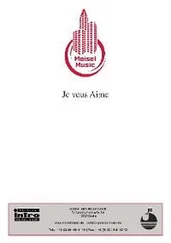She stood up and turned to me.
“And you, too, Charlotte.” Her eyes flicked briefly over my T-shirt, the one I had worn despite my mother telling me it was too tight. To Dr. Paulsen’s credit, she only frowned her disapproval for an instant before she met my eyes and smiled. She held out her hand.
When she parted her lips to grin, behind her white, white teeth, I caught a glimpse of her tongue. It was the yellowiest, craggiest, driest tongue I’d ever seen. It surely did not belong in that mouth, in her, and I shot a look to my mother, who widened her eyes, who gave one quick shake of her head that told me to ignore it. I turned to Dr. Paulsen and smiled very widely back at her.
Dr. Paulsen turned to Lester Potter, nodded a thanks to him, and then led us through the double leather doors to the hallway beyond. The hallway smelled like furniture polish and rotting brocade and underneath that something else, something warm and dark and rude. Wild animals.
“This is the west wing.” Dr. Paulsen walked ahead of us. “Your apartment’s here, on the second floor.”
“Where are the chimps?” Callie asked.
“They live in the east wing,” Dr. Paulsen said. “But we’ll skip that for now. It would be too overwhelming to visit today.”
All along the hallways were offices and labs and conference rooms, and Dr. Paulsen made a show of stepping into each one. The rooms had high, arched ceilings and gilt windowpanes that clashed with the wheelie chairs and gray-faced conference tables. One large room was a working lab with banks of counters and sinks and refrigerators, the labs’ sinks piled high with dirty glass vials. The animal smell was strongest there, battling with the reek of warm bleach and floor wax.
Every room we entered, Dr. Paulsen pointed to each of us and said, “Laurel and Charles and Callie and Charlotte,” to whoever was inside. Mostly women in shorts and tank tops, despite the clammy air-conditioning. No one wore a lab coat like Dr. Paulsen’s. While Dr. Paulsen introduced us, I could feel them looking curiously at me and Callie. But before any of them could step forward to introduce themselves, Dr. Paulsen ushered us out of the room again. “Too many names to learn today.” We kept walking.
“There are twenty researchers working at the institute,” Dr. Paulsen explained. “They all live off campus. We have eighteen chimpanzees in total. Plus the ground staff, the cleaning crew, myself, a small administrative staff and security.”
“Oh, we’ve already met security,” my father said.
“Yes. Lester,” Dr. Paulsen said sheepishly. She slowed her pace until she walked beside my father. “There’s only one of him, so we can’t have him always at the gate — he can’t be two places at once. We really should probably have more security, you know, those animal rights protesters. It can get nasty. But we’re privately funded, thanks to our founder, Miss Toneybee-Leroy. We’re very low profile. She’s made sure of that. We’re kind of off the radar. Or at least we have been.”
We kept walking, Callie threatening to break into an honest run until my mother caught her hand and gave it a shake. They walked ahead of us, Dr. Paulsen studying them. Without breaking stride, she drew a piece of chalk from her pocket, flicked her tongue over its stub, and then slipped it back. I was the only one who saw her do it.
At the end of the hallway was a plain wooden staircase. “This is the private entrance to your apartment,” Dr. Paulsen told us. “We’ll get you settled in.”
But beside the stairs was a large oil portrait banked with lights, the brightest we’d seen in the institute so far. The plaque on the portrait read MISS JULIA TONEYBEE-LEROY, FOUNDER, 1929.
It was hard to tell from the painting if Julia Toneybee-Leroy was meant to be beautiful. She was a thin-boned woman with a fleshy jaw. She wore a green evening gown with long sleeves and a neckline cut too low, and she was sitting in an armchair. A thick curl of dull gold hair was painted against her neck. Her eyes were too frank. It was the gaze of a zealot. I didn’t know that word then, but even if I had, I wouldn’t have known enough, the first time seeing her, to use it for Miss Julia Toneybee-Leroy. I only knew that something inside of me flipped over when I saw that picture.
In the painting, beside her, on a table, held up by a stick through the skull, were the bright, white bones of a squat skeleton.
“Why are there baby bones in that picture?” Callie asked.
Dr. Paulsen blushed a painful red. “Those bones are the remains of the first-ever chimp to live at the Toneybee Institute.”
“Oh,” Callie said. She did not sound convinced.
“Her name was Daisy,” Dr. Paulsen offered.
Callie was still gazing up at the picture, trying to give it the benefit of the doubt. “How many chimps die here, like that?”
“Oh, it’s not like that, Callie,” Dr. Paulsen rushed to explain. “Daisy died a long time ago, from a cold. There was nothing they could do. She wasn’t used to the winters. But we’re properly heated now and we take good care of everyone here.”
“Well, is she still alive?” Callie nodded at the woman in the painting.
“Julia Toneybee-Leroy? Yes, very much so.”
“That doesn’t seem very fair,” Callie muttered, and my mother reached out and rubbed her arm, a comfort and a warning. “It’s okay, Callie.”
Dr. Paulsen hurried us up the flight of stairs and away from the troubling picture. We arrived in a short, overly lit hall. This one had only one door, again of plain wood, with a buzzer set in the wall. Dr. Paulsen unlocked the door and we filed behind her into the front room. Our boxes had already been delivered and they were piled in towers all around us, but the furniture belonged to the Toneybee. We’d sold all of ours back in Dorchester. “They’re giving us brand-new furniture,” my mother had crowed. “Can you imagine?”
The couch in the front room was just as saggy and broken down as the one we’d had in Boston. There were also a few wooden end tables that looked rich: dark wood carved with heavy curlicues. But when I stood beside one, I saw that the flourishes were nicked and the tops of the tables were scarred and printed with an infinity of fading water rings. I leaned against the table and it tottered slightly back and forth. One back leg was shorter than the others.
Callie ran ahead of us, deeper into the apartment, throwing doors open as she went. I was slower, making a show of being unimpressed. I trailed my fingers over the freshly painted walls, pressed on the glass in the windowpanes. Behind me, I could hear my mother and Dr. Paulsen. Dr. Paulsen murmured something very low and my mother’s answer back was quick and light and clattering, her new voice here, overly bright.
They’d decided something. My mother called to me and my father, “Dr. Paulsen thinks it’s best we all meet Charlie now.”
CHARLIE LIVED BEHIND a door in the living room. He had a large, oval-shaped space with low ceilings and no windows and no furniture. Instead, there were bundles of pastel-colored blankets heaped up on the scarred wooden floor. Even from where I stood, I could tell the blankets were the scratchy kind, cheap wool. The room was full of plants — house ferns and weak African violets and nodding painted ladies. “They’re here to simulate the natural world,” Dr. Paulsen told us, but I thought it was an empty gesture. Charlie had never known any forests and yet Dr. Paulsen assumed some essential part of him pined for them.
Charlie sat beside a fern. A man knelt beside him. “That’s Max, my assistant,” Dr. Paulsen said.
Max was wearing jeans and a red T-shirt, his lab coat balled up on the floor. He was pale, with messy red hair. He was trying to grow a beard, probably just graduated from college a couple years earlier.
Читать дальше
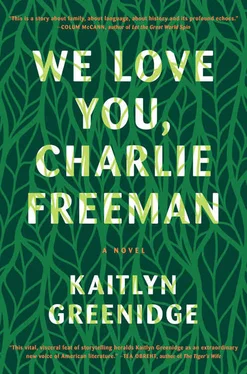

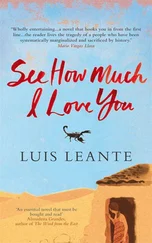
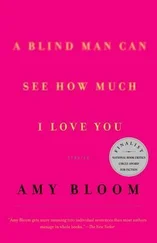



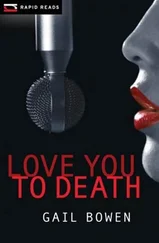
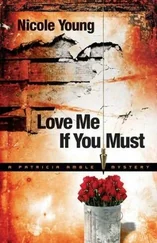

![Ally Carter - [Gallagher Girls 01] I'd Tell You I Love You But Then I'd Have to Kill You](/books/262179/ally-carter-gallagher-girls-01-i-d-tell-you-i-lo-thumb.webp)

